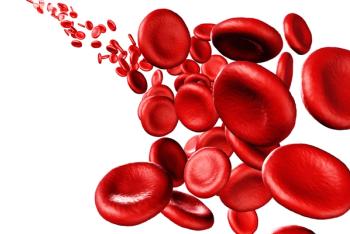
Miami Breast Cancer Conference® Abstracts Supplement
- 42nd Annual Miami Breast Cancer Conference® - Abstracts
- Volume 39
- Issue 4
- Pages: 66
75 Comparing 21-Gene Assay Recurrence Scores Before and After Preoperative Radiation Boost in Patients Enrolled in a Phase 2 Prospective Clinical Trial
Background/Significance
Early-stage breast cancer is commonly treated with breast-conserving surgery (BCS) followed by whole breast irradiation (WBI). A radiation boost to the tumor bed is also recommended in some cases, is dependent on patient age and disease characteristics, and is usually delivered following BCS and WBI. We conducted a prospective, phase 2 clinical trial (NCT04871516) in which the radiation boost was delivered preoperatively instead of postoperatively, the first results of which have been previously published. Due to concerns that the preoperative radiation boost could possibly alter the genomic profile of the tumor, we compared the 21-gene assay results (Oncotype DX Breast Recurrence Score) before and after the boost, to see if a change may have altered systemic therapy.
Materials and Methods
Patients received a preoperative boost of 13.32 Gy in 4 daily fractions, followed by BCS 1 to 3 weeks after, followed by WBI of 36.63 Gy in 11 daily fractions 3 to 8 weeks after surgery. A total of 55 patients were enrolled in the trial. We randomly selected 17 patients to compare the 21-gene assay results before and after the boost. We used paired Student’s t-test to see whether the difference between the 2 sets of scores is statistically significant.
Results
Tissue was sufficient to run the assay on the core needle biopsy and the lumpectomy specimens in 15 patients. All patients had clinically negative axillary nodes. The median age at diagnosis was 68 years (range, 53-79). Average tumor size was 13.15 mm (range, 7-21). There were 3 lobular, 1 mucinous, and 11 ductal invasive carcinomas. All tumors were hormone receptor–positive and HER2-negative. The mean 21-gene assay result prior to the radiation boost was 12 (± SD, 7.92), and after was 13.47 (± SD 6.93). Paired Student’s t-test showed no significant difference between the pre- and postradiation results (t = 0.5399, P = .6). In 9 of 15 (60%) patients, the results of the 21-gene assay slightly increased after the boost by an average of 4.78 points (± SD, 2.05), and in 6 of 15 (40%), they slightly decreased by an average of 3.5 points (± SD, 2.74). In none of these 15 patients would the preoperative boost have altered systemic therapy.
Conclusion
In this cohort of patients from our preoperative radiation boost trial, results of the 21-gene assay were not significantly changed after the radiation boost. This indicates that, in this protocol, preoperative radiation boost would likely not alter systemic therapy decisions.
Articles in this issue
Newsletter
Stay up to date on recent advances in the multidisciplinary approach to cancer.























































































